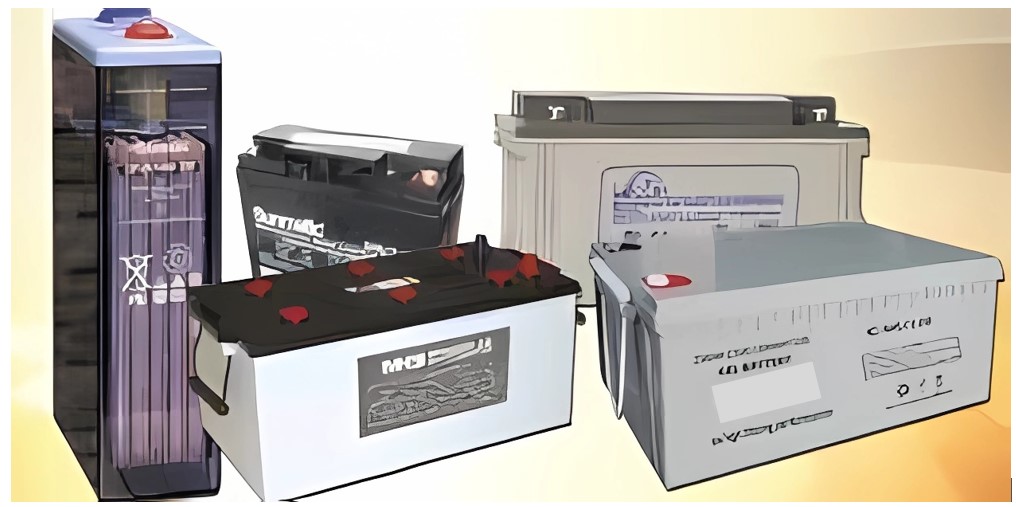AC/DC Power
Sizing criteria for battery banks in DC systems
Batteries are elements that do not actually belong to the DC system itself. However, they have gained great importance now a days, so we present the sizing criteria for battery banks.
This equipment serves a crucial function. Which is to prevent the equipment from running out of power when, for any reason, the AC/DC rectifiers stop working.
They also temporarily supply the missing power during peak load demand when the rest of the equipment, like the AC/DC rectifiers, cannot do so.
We invite you to read our post regarding the design criteria for DC power systems, starting with the article Service entrance and AC panels for DC power systems.
In this post, we will focus on the design with stationary battery banks consisting of 2 Vdc and 12 Vdc cells, specifically. Let’s dive into it.
The parameters to consider for the sizing of battery banks
The first step is to choose the number of cells, which is determined by the charge voltage per cell and the system itself.
For example, for a 48 Vdc system, the number of cells would be 24 at 2 Vdc each, or 4 batteries at 12 Vdc.
Now, we present the parameters in a general form, and you only need to customize them according to your project’s requirements.
Electrical parameters

- Nominal system voltage in DC
- Voltage range of the equipment to be powered, its maximum and minimum operating voltage in DC
- Maximum demand, in DC Amps, of the equipment to be powered
- Estimated growth of electrical load over a period of 5 to 10 years. If this data is not available, consider 25% of the current load
- Special voltages:
- Float voltage:
- For open or ventilated batteries: 2.2 Vdc per cell (or as recommended by the manufacturer)
- For valve-regulated batteries: 2.25 Vdc per cell (or as recommended by the manufacturer)
- Equalization or recharge voltage:
- For open or ventilated batteries: 2.33 Vdc per cell (or as recommended by the manufacturer)
- For valve-regulated batteries: not applicable
- Float voltage:
Chemical parameters
Los parámetros químicos a tener en cuenta en los criterios de dimensionamiento son:
- Densidad nominal del electrolito para baterías abiertas o ventiladas: 1220 o 1240 gr/cm3 ± 0,005
- Densidad nominal del electrolito para bateríasválvula regulada, se deja a libre elección del fabricante
The chemical parameters to consider in the sizing criteria are:
- Nominal electrolyte density for open or ventilated batteries: 1220 or 1240 gr/cm3 ± 0.005
- Nominal electrolyte density for valve-regulated batteries is left to the manufacturer’s choice
Temperature parameters

The temperature guidelines in the sizing criteria are as follows:
- The maximum room temperature for open or ventilated batteries should be 50 °C
- The maximum room temperature for sealed or valve-regulated batteries should be 25 °C
Autonomy time for telecommunications service

One of the main uses of batteries is for telecommunications systems. Since this is a strategic service where equipment should never be without power.
Even in installations with a backup generator, batteries are indispensable. The reason is that the generator takes approximately 30 seconds to take over the load. During this time, the system is without DC power.
In such cases, batteries prevent the equipment from shutting down by providing the necessary energy. Additionally, in the event of a generator failure, they must have the capacity to keep the system running for several hours.
There are global standards regarding this minimum autonomy time, which are detailed below. It is important to consider these standards when sizing this equipment.
- Urban telephone installations with a generator: 6 hours
- Urban telephone installations without a backup generator: 8 hours
- Remote telephone installations with a generator and difficult access: 12 hours
- Remote telephone installations without a backup generator and difficult access: 16 hours
- Remote telephone installations with a generator and easy access: 8 hours
- Remote telephone installations without a backup generator and easy access: 12 hours
This time should be added to the transportation period to the location of the installation.
To conclude
As you may have observed, the sizing of a battery bank must adhere to certain variables. These can be adjusted depending on their use, but here we provide you with the minimum requirements to meet.
If you want to learn everything about this equipment, we invite you to read the series of posts on the topic. We suggest starting with Batteries and their generalities. It will clarify many doubts!
Additionally, we offer the Sizing and design course for dc power systems for telecommunications and critical systems. In this course, we explain everything you need to know for the sizing and design of the installation of this component.
Acting as a backup for a DC power system. If you want to find out more about its content, click here.
In the energydcac blog, we have a wealth of content for you related to this area and everything about AC and DC power. It also covers what you want to know about solar energy and its components. Don’t miss any of it!

